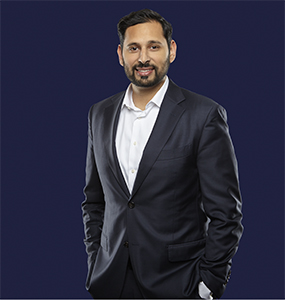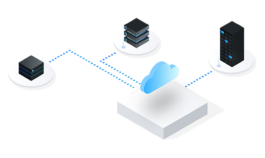The calls for global ESG reporting standards are getting louder. Here’s why.

A recent op-ed by Jeffrey Jones in The Globe and Mail led with this provocative headline: “Accountants have had enough. It’s time to develop global standards for corporate reporting on ESG issues.” Pointing to the “dizzying” array” of ESG reporting standards that currently exist, Jones called for a standard global approach to ESG disclosure.
Covering everything from carbon tracking, energy management and efficiency, waste and wastewater initiatives to social dimensions like gender diversity and charitable giving, standardized ESG reporting would give organizations tangible, trustworthy insights into ESG performance tracking and management.
Can sustainability performance be measured like financial targets? The growing consensus is yes. Core tenets of ESG reporting are the same as those found in traditional accounting – putting data into a standardized framework that yields transparency, timeliness, relevance and materiality.
Across industries, there is keen interest in creating a standardized approach to ESG reporting. Efforts are well underway to combine financial reporting and sustainable material reporting in a way that shows investors the clear link between economic viability and responsibility to people, planet, and profit.
Recently, I participated in an ESG Strategy Panel with The Globe and Mail where our discussion focused on how corporations can demonstrate credibility and accountability in achieving their ESG goals such as the journey to Net Zero. Conversations like these demonstrate we are heading in the right direction. Standards are on their way, and accountants are waiting for a new consolidated international standard to emerge.
For now, a standardized, cross-industry, ESG reporting standard still doesn’t exist and organizations must contend with the challenge of reporting on a wide array of ESG frameworks such as GRI, TCFD, SASB, and CDP.
Like my peers, I believe data management, analytics, AI and transformation initiatives will play a key role in simplifying and standardizing ESG reporting processes. IBM is taking a leading role in creating the frameworks to manage data and to transfer that data into models that feed reporting standards that are seamless, trusted and straightforward.
A data inventory is the first step
Data is the foundation of reporting, but ESG data is often hard to locate and define. Questions abound. Where does the data reside – internally, with clients, or with vendors?
Compounding the challenge of locating the data is the emerging requirement for granular-level reporting. Investors and employees are looking for truth in reporting. They are asking if the data can be trusted. Is it auditable? Can it be tracked and traced? Organizations can have thousands of mobile devices and processes, and hundreds of employees, which creates a problem of transparency and auditability.
Finally, how can the data be analyzed and understood for the benefit of the organization and the communities it serves? With multiple data sources, standards, and components (refresh rate, confidence level, source), how can that data be tied to a KPI that yields relevant insights in areas that are ripe for optimization? Who is tracking that? Can exponential technologies play a role finding new opportunities for more efficiency?
Why an ESG data model is required
With compliance reporting requirements increasing, it’s important to understand where the data is coming from, how it’s managed, and the specific insights your company needs to benefit not only from reduction in carbon but to reduce costs, resource usage, and improve your compliance posture.
For compliance purposes, how can output be reconciled with input, while showing transparency, and enabling faster or on-demand reporting? This is the common challenge.
Organizations should have a data model, or ontology, to easily customize transformations, meet reporting requirements, and automate resource-intensive aspects of sustainability reporting. Within this model, trusted data is retained, managed, and aligned with an enterprise data strategy – then linked to a business intelligence tool that is integrated with other source data repositories and tracked back to the source data itself.
Three foundational steps to a sustainable transformation
ESG reporting is integral for any company seeking relevance to employees and communities now and in the future. Companies using an “inside out” perspective for their sustainable initiatives are actively incorporating three main building blocks into their transformation:
- Journey to Net Zero: You can’t fix what you don’t measure. Accurately tracking your progress toward achieving Net Zero goals is essential. As companies measure, quantify, offset and report for compliance, they are taking the first step to Net Zero.
- Circularity: From procurement to consumption to end of life, products and solutions should be engineered for zero waste to reduce both input costs and environmental impact. How can that process be tracked and measured effectively?
- Sustainable by Design: Sustainable thinking incorporated into every aspect of business operations – people, processes, technology and data – will benefit clients and the communities in which the company operates.
These three focus areas must be tied into the value chain of your company, with trusted data as the underlying component. Standardized ESG reporting provides transparent and accurate data, giving senior executives what they need to make strategic operational decisions.
Realizing the benefits of standardized ESG reporting
Many enterprises want to measure their performance so they can quantify which sustainability initiatives are driving competitive advantage. Calls for a standardized ESG reporting process are growing louder as the business benefits of reduced costs, improved access to capital and new markets, and reduced environmental and social impact are better understood.
IBM can help clients use trusted data and exponential technologies to accelerate their journey toward sustainable transformation across these three key focus areas using the six IBM solutions that are designed to enable that transformation.
In my next blog, I’ll explore how the three steps to sustainable transformation are benefiting different industries throughout various stages of their journey. In the meantime, I invite you to connect with me on LinkedIn if you’d like to talk further.
Further reading:
Visit IBM Sustainability
Read IBV Expert insights- Sustainability as a business strategy.
SASB: https://www.sasb.org/standards/
CDSB: Climate Disclosures Standards Board

Ally Karmali, Practice Lead – Sustainability, IBM Consulting
LinkedIn: http://linkedin.com/in/allykarmali
Twitter: @AllyKarmali


